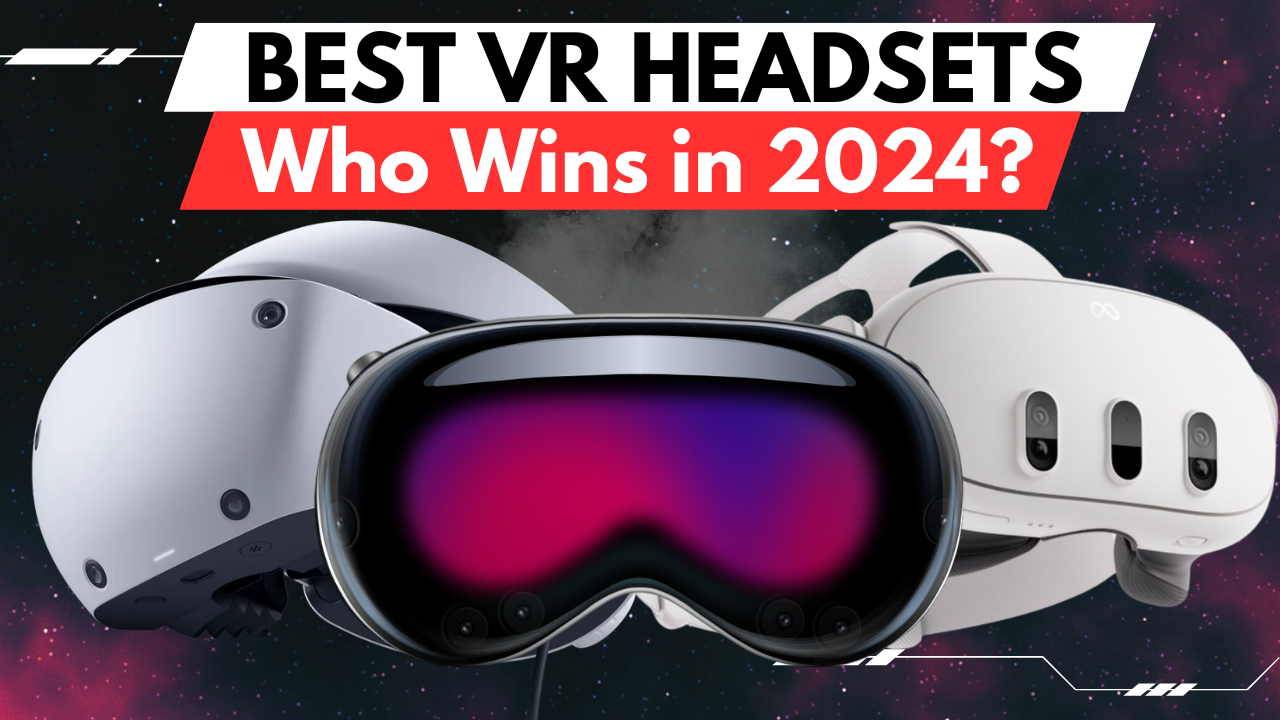Disclaimer: We may earn affiliate commission from qualifying purchases at no extra cost to you.
Step into the immersive world of virtual reality with the best VR headsets of 2024. These cutting-edge devices offer unparalleled visual fidelity, immersive experiences, and seamless interaction, revolutionizing how we engage with digital content. From gaming to virtual travel, these top picks redefine the boundaries of reality.
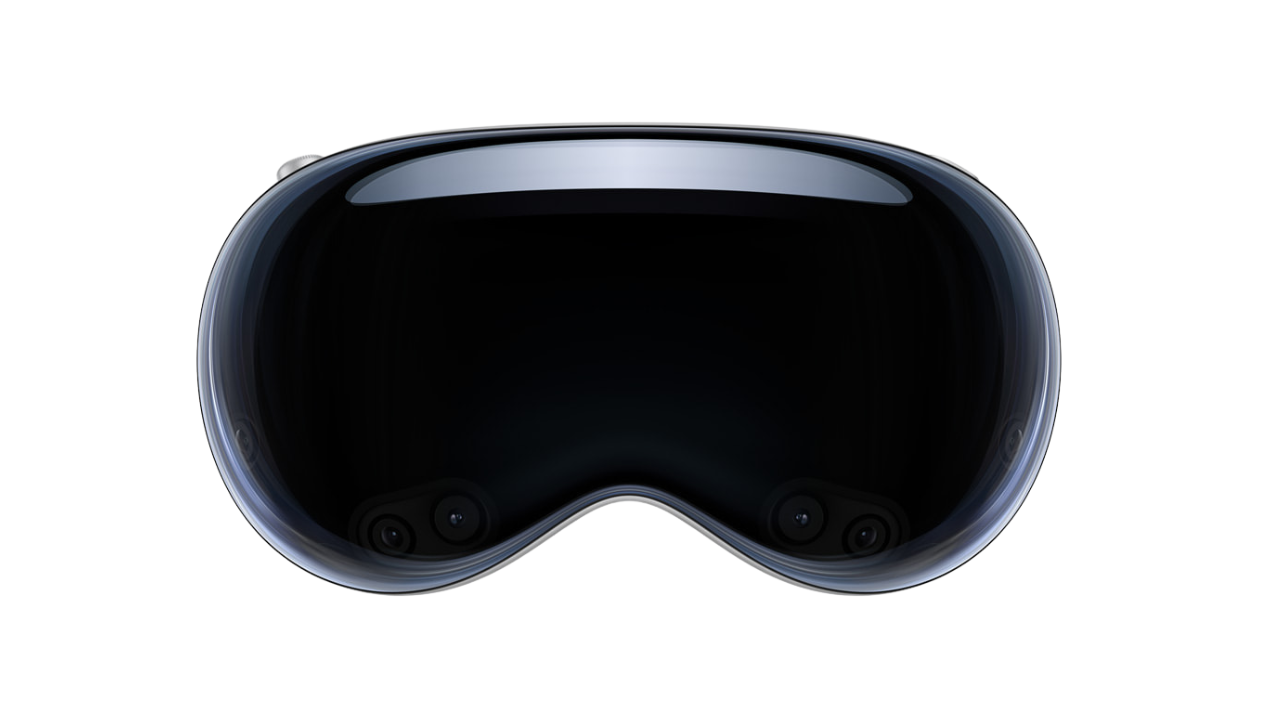
Apple Vision Pro

Meta Quest 3
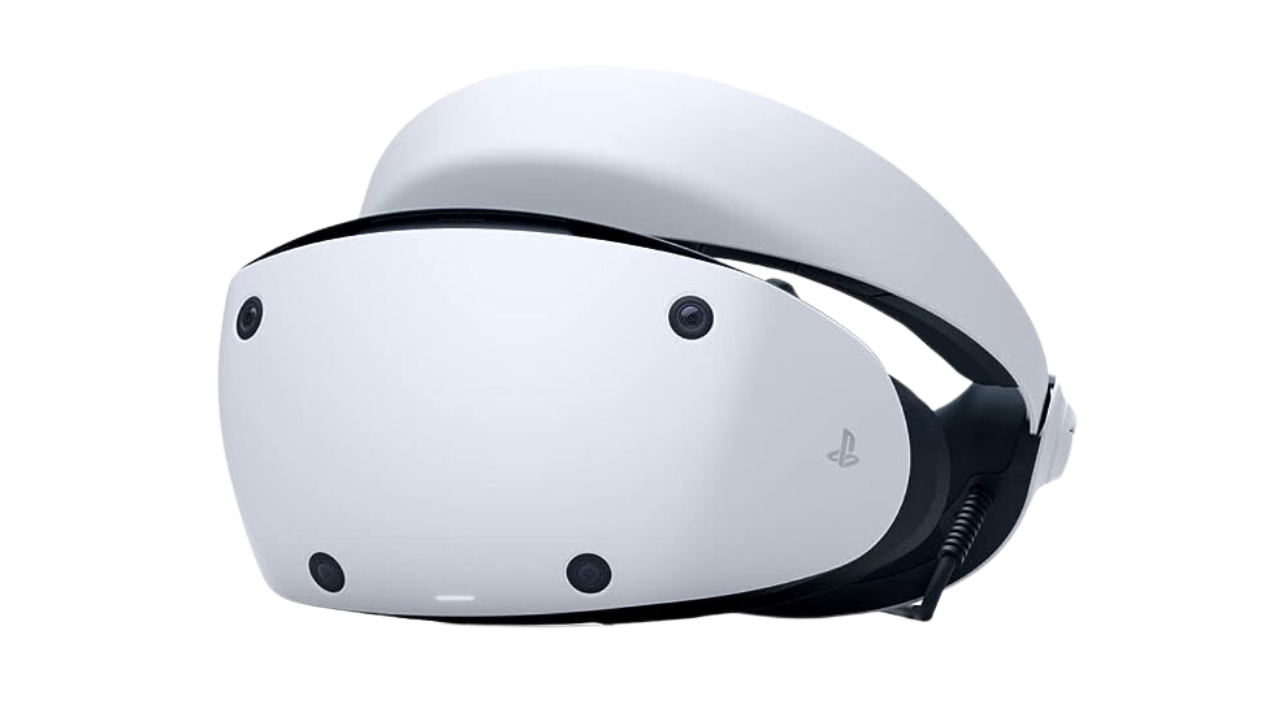
PlayStation VR2
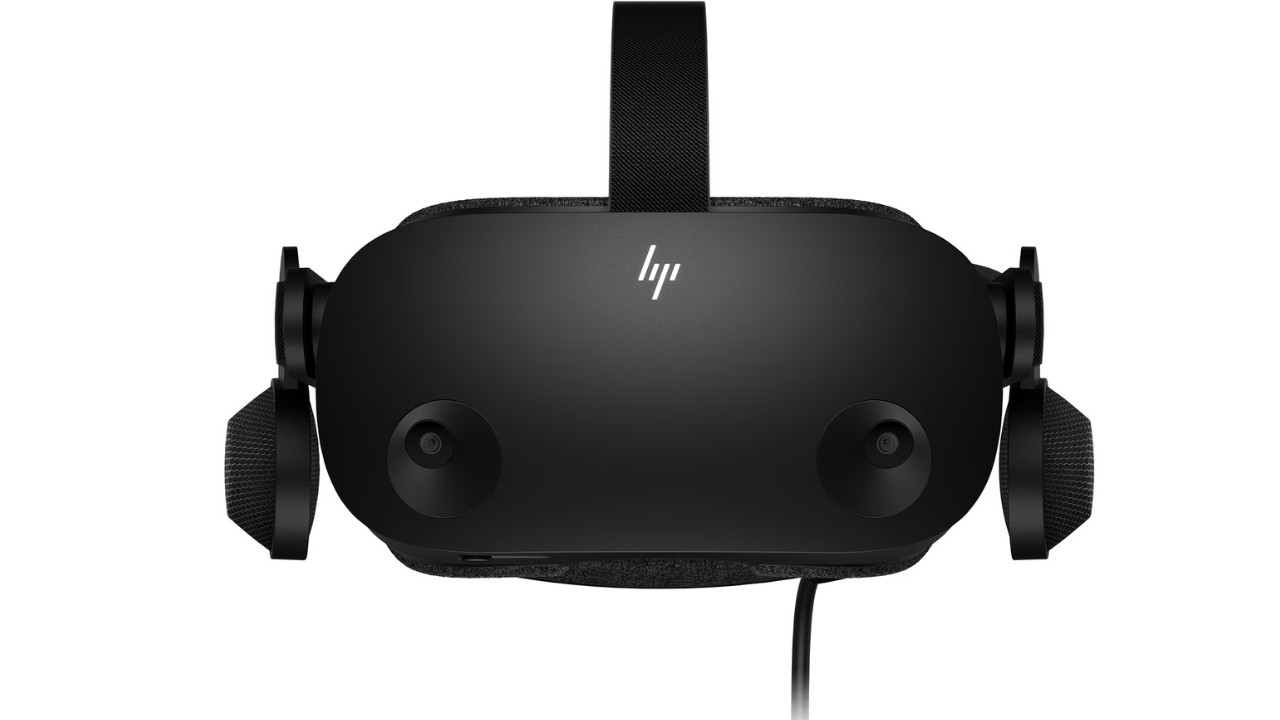
HP Reverb G2
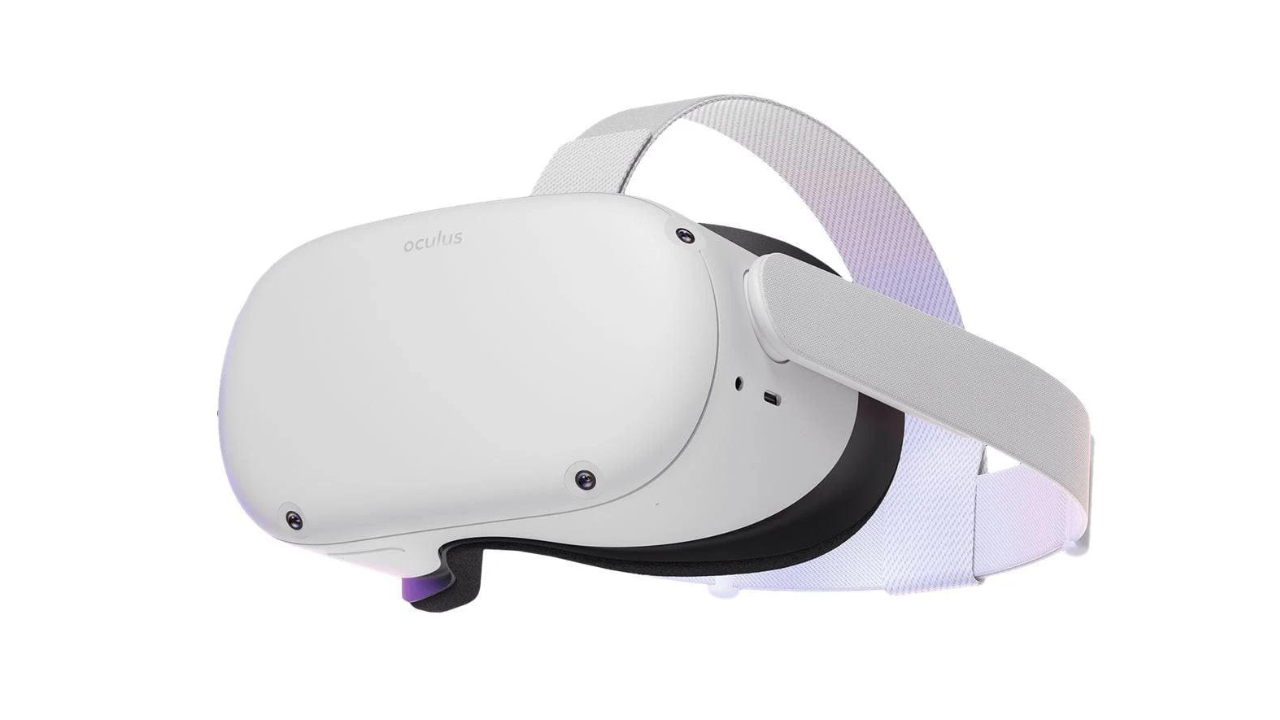
Meta Quest 2

The first one on our list is Apple Vision Pro. The Apple Vision Pro is Apple’s latest foray into the world of virtual reality, and it has certainly made a significant impression. This headset boasts impressive displays and video passthrough, making it stand out in the competitive VR market. We would describe it as “the world’s most advanced consumer electronics device,” and after a hands-on experience, it’s evident that Apple has invested heavily in both hardware and software aspects of the device.
The design of the Vision Pro is in line with Apple’s aesthetic language, featuring brushed aluminium, shiny glass, and soft fabrics. The build quality is reminiscent of earlier iPhone models, presenting a cohesive and premium appearance. The front glass, serving as an optical lens for cameras and the OLED screen, is a complex piece of engineering, showcasing Apple’s commitment to both form and function.
One of the standout features of the Vision Pro is its remarkable displays. With a 4K display for each eye and pixels as small as 23 microns, the visual experience is nothing short of extraordinary. During a brief test, the display proved to be highly workable, delivering crisp and clear images for tasks ranging from reading text in Safari to watching movies.
The video passthrough feature is another area where Apple shines. The passthrough feature showcases zero latency and sharp clarity. This allowed us to interact with the physical environment, take notes on their phone, and even engage in conversations while wearing the headset. Despite some observed compression issues and loss of detail in darker environments, the seamless integration of the passthrough is a significant leap forward for Apple.
Apple has tackled hardware interaction problems effectively. The combination of 12 cameras, a Lidar sensor, and a TrueDepth camera, along with IR flood illuminators, allows for precise hand tracking even in low-light conditions. The device is powered by Apple’s M2 and new R1 processors, generating some heat, which is efficiently vented out of the device.
The Vision Pro is noticeably heavier than both the well-known Quest 2 and the Quest 3, both of which feature built-in batteries. In contrast, the Vision Pro is equipped with an external battery. Apple clarified that the choice of an external battery was a deliberate decision made to decrease the overall weight of the headset. The battery, weighing 353 grams, resembles a silver brick and features a USB-C port along with a motion-activated LED that turns green when charged and orange when not.
Overall, The Vision Pro is a remarkable first-generation device, a testament to Apple’s unique capabilities. From its stunning display and innovative passthrough engineering to seamless integration with the ecosystem, Apple has created a product that effortlessly addresses user needs, even diverting attention from the unconventional external battery setup.

The second one on our list is Meta Quest 3. The Meta Quest 3 is a standout standalone VR headset that sets a new standard in the virtual reality landscape. Boasting a swift processor and a high-resolution display, this device offers an immersive experience with crisp visuals and vibrant colours. One of its standout features is the inclusion of colour pass-through cameras, allowing users to seamlessly blend virtual and real worlds through augmented reality.
The sleek and compact design of the Quest 3 enhances user comfort, with a streamlined chassis that weighs just 18.2 ounces. The curved face houses four cameras, contributing to spatial tracking and AR content interaction. The adjustable three-point harness headband provides a secure and comfortable fit, and the motion controllers, while similar to the Quest 2, offer a lightweight and ergonomic design.
Under the hood, the Quest 3 impresses with a Snapdragon XR2 Gen 2 processor, delivering 2.5 times the performance of its predecessor. The 128GB storage capacity ensures ample space for VR experiences and games. The device excels in visual quality, displaying a sharp 2,064-by-2,208-pixel picture per eye, surpassing its predecessors.
Notably, the colour pass-through cameras enhance environmental awareness, offering a significant upgrade over previous models. The Quest 3’s higher resolution contributes to a sharper and more vibrant VR experience, making it a top choice for enthusiasts.
In terms of battery life, the Quest 3 runs on a lithium-ion battery, providing approximately two hours of gameplay on a single charge. This duration is generally satisfactory for many users.
While the device lacks eye-tracking tech and suffers from a relatively short battery life, its overall performance and features position it as a leading contender in the VR headset market.

The third one on our list is PlayStation VR2. The PlayStation VR2 represents a significant leap forward in virtual reality technology, offering a range of improvements over its predecessor.
Comfort is a strong point of the PSVR2. Despite its bulkier design, the headset is comfortable for extended periods of use, thanks to adjustable features like the sliding lens module and a sturdy headband with a convenient tightening dial. The inclusion of earbuds that plug into the rear of the headset adds to the overall immersion by providing a more localized audio experience.
The headset also features better controllers, dubbed Sense VR controllers, which provide precise tracking and allow for more intuitive interactions within the virtual environment.
One standout feature of the VR2 is its impressive eye-tracking capability. This technology not only facilitates efficient menu navigation but also adds a layer of realism to in-game interactions.
The improved specifications, including a higher resolution of 2,000 by 2,040 pixels per eye and HDR support, contribute to delivering one of the best VR displays in the market.
While the PSVR2 excels in various aspects, it faces a drawback in its game library, which is currently limited. The headset is not backward compatible with previous PSVR titles, and the availability of games needs expansion to fully capitalize on the system’s capabilities.
Nevertheless, the innovative features, comfortable design, and improved controllers make the PlayStation VR2 a compelling option for those seeking a top-tier VR experience.

The fourth one on our list is HP Reverb G2. The HP Reverb G2 VR headset presents a commendable evolution from its predecessor, delivering a more comfortable fit and enhanced reliability. The redesigned device maintains its impressive high resolution, providing a sharp and clear visual experience. The motion controllers have seen notable improvements, offering a better feel compared to the previous version, and the overall compatibility with SteamVR is reliable.
The physical tweaks in design contribute to increased comfort, with upgraded features such as a smoother plastic visor and additional cameras for improved motion tracking. The headset’s construction includes memory foam lining on the facemask, ensuring a snug fit. The adjustable pupillary distance and the elimination of fabric on the front panel are positive changes.
The Reverb G2 boasts high-quality displays, showcasing 2,160 by 2,160 pixels per eye at a 90Hz refresh rate. This resolution results in an extremely sharp picture, outperforming some competitors in the market. The audio experience is delivered through speakers mounted on the headband, providing clear sound effects and voice chat.
The camera-based motion tracking, while generally solid, may experience occasional hiccups, particularly with the controllers if moved out of the camera’s line of sight. Despite being a tethered VR headset, the setup process is relatively straightforward, especially when integrating with SteamVR.
In terms of performance, the Reverb G2 shines in various VR applications, offering a smooth and natural experience.
Overall, the HP Reverb G2 stands out as a compelling option for users seeking a tethered VR headset with a focus on high resolution and comfort. Its reliability with SteamVR and the upgraded design elements contribute to a positive user experience.

The last one on our list is Meta Quest 2. The Meta Quest 2, despite being succeeded by the Meta Quest 3, remains a compelling entry-level VR headset that offers a delightful mix of upgraded specs, sleek design, and an expansive library of apps and games.
One of its standout features is the Qualcomm Snapdragon XR2 chipset, which enhances performance and contributes to smooth and snappy menu navigation. The display resolution of 1832 x 1920 per eye ensures an immersive visual experience.
The headset’s design is a notable improvement, with a lighter and more comfortable build compared to its predecessor. The compact size, weighing 1.1 pounds, and adjustable elastic bands contribute to a comfortable fit for extended VR sessions. The aesthetic appeal is heightened by a sleek, light gray color that adds to the overall attractiveness, making it not only a functional device but also visually appealing on a desk or when worn.
The Meta Quest 2’s game library is a strong selling point, offering a diverse range of titles. The headset’s versatility extends beyond gaming, with a selection of entertainment and productivity apps providing additional value. The built-in positional audio is a standout feature, delivering crisp and directional sound without the need for headphones, adding to the immersive experience.
While the Meta Quest 2 isn’t without its drawbacks, such as controllers relying on AA batteries and the need for a Link cable for PC games, these are relatively minor issues in the grand scheme. The controllers themselves are praised for their comfort and functionality across various games, providing an intuitive gaming experience.
Battery life, rated at 2 to 3 hours, aligns well with practical usage, and the device’s compatibility with accessories further enhances the overall VR experience.
In conclusion, the Meta Quest 2’s combination of design, performance, and a rich library of content solidifies its position as one of the best entry points into virtual reality, even in the presence of its successor.
In conclusion, the world of VR technology in 2024 offers a diverse array of options, each catering to different needs and preferences. Whether you’re a gaming enthusiast, an avid consumer of virtual experiences, or a professional seeking innovative tools, there’s a VR headset out there for you. By carefully considering factors such as features, compatibility, content ecosystem, and budget, you can make an informed decision and embark on a journey of immersive, transformative experiences in the virtual realm. The best VR headsets of 2024 are not just gadgets; they’re portals to new worlds, adventures, and possibilities, waiting to be explored.

